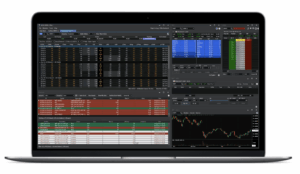The three-day meeting of the Monetary Policy Committee of the Reserve Bank of India begins today, and at the end of this meeting, the central bank is widely expected to leave the repo rate unchanged at 6.50%.
If done, this will be the fourth consecutive time the RBI leaves interest rates untouched.
While the repo rate and the stance of “withdrawal of accommodation” may be left unchanged, the tone of the central bank is likely to be slightly hawkish, particularly on the inflation front, in the backdrop of the current domestic and global environment.
Inflation Risks
After touching a 15-month high of 7.44% in July, India’s consumer price index-based inflation eased to 6.83% in August, but remained above the RBI’s inflation target range of 2-6% for the second straight month.
This was primarily because of easing vegetable prices, but if one looks at the trajectory of other food prices, the picture isn’t so rosy. Pulses prices remain high and rose 13% on year in August.
Further, crude oil prices have shot up significantly since the last meeting of the RBI rate setting panel. Brent Crude oil prices moved past the $95 a barrel mark, hitting their highest levels in over a year.
In its last meeting in August, the RBI had increased CPI inflation projection for 2023-24 (April-March) sharply to 5.4% from 5.1%.
Whether the central bank does any tinkering to this projection is something Dalal Street investors will closely watch out for.
“The recent spike in crude oil prices and global bond yields shall keep MPC vigilant on inflation-growth dynamics. The MPC is expected to maintain a status quo on rates and stance at the upcoming meeting,” said Parijat Agrawal, head-fixed income, Union Asset Management Co.
While the headline inflation is expected to cool down further in September as compared to August, Agrawal expects it to still remain above the RBI’s comfort zone.
Global Risks
The global environment has turned quite volatile ever since the last meeting of the RBI, with rising crude oil prices and bond yields.
The yield on the benchmark US 10-year treasury note inched up to 4.67% from around 3.96% in early August.
The US Federal Reserve, which last month, guided for one more 25 basis point hike in interest rates in 2023, triggered the sharp upmove in bond yields as well as the dollar index.
“The global environment is turning extremely volatile with increasing headwinds for emerging economies, amid increasing narrative of higher rates for longer as US growth remains resilient and inflation faces upside risks,” said Upasna Bhardwaj, chief economist, Kotak Mahindra Bank.
Growth Outlook
While upside risks to inflation persist, India’s growth indicators have remained favourable, making it one of the fastest growing economies in the world at the current juncture.
Therefore, most economists don’t see the central bank making any changes to its growth projections. The RBI projected India’s GDP to grow 6.5% in 2023-24.
Further, the ongoing festive season is expected to drive discretionary demand even though monsoon rains have been below normal.
But the central bank’s assessment of the Indian economy and the potential risks from the global spillovers will still be closely monitored by investors.
Liquidity Management
In its attempt to manage liquidity efficiently, the RBI in its last meeting sent a shocker to investors as well as the banking sector by imposing an incremental Cash Reserve Ratio (CRR) of 10% of NDTL.
However, last month, the central bank announced withdrawal of the incremental CRR in a phased manner.
“Based on an assessment of current and evolving liquidity conditions, it has been decided that the amounts impounded under the I-CRR would be released in stages so that system liquidity is not subjected to sudden shocks and money markets function in an orderly manner,” the RBI had said.
The central bank’s comments on the liquidity front will also be keenly eyed by investors.
Upasna Bhardwaj of Kotak Mahindra Bank expects the RBI to prefer keeping the short-term rates elevated in the near term by using liquidity tools, given the pressure on rupee and the underlying inflationary risks.
(Disclaimer: Recommendations, suggestions, views and opinions given by the experts are their own. These do not represent the views of Economic Times)









